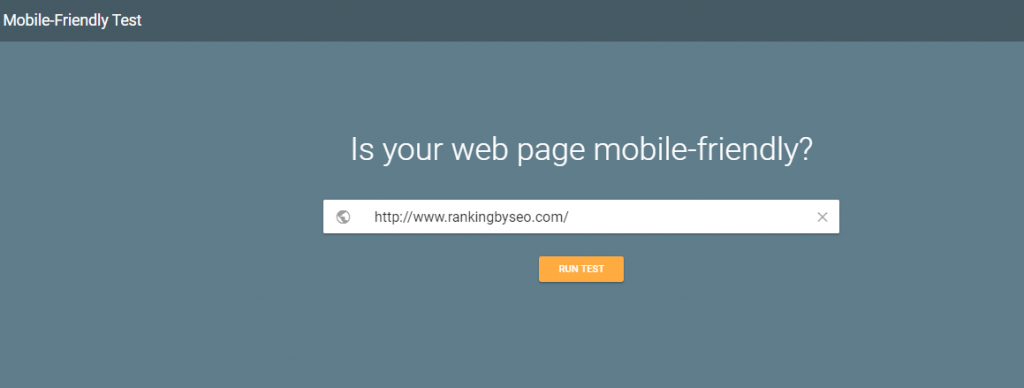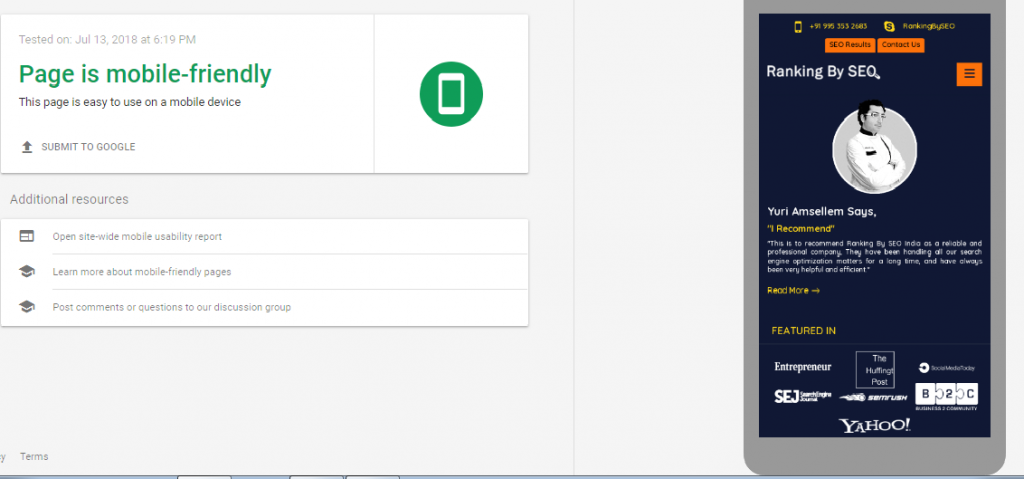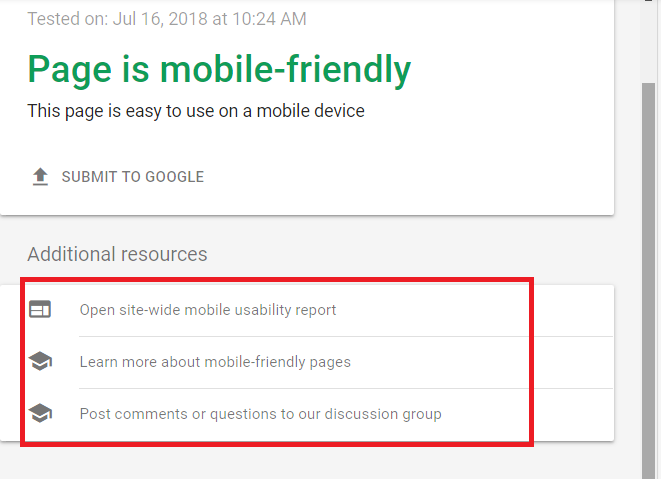Soon it will be 2023, and Google has been already rolling out Mobile First indexing.
As someone who keeps tabs on the latest happening in the digital marketing world, you must have felt the buzz around Google Mobile first indexing.
Great, if you have already adopted Mobile First strategy!
The help is here in case you are still trying to solve this puzzle.
In today’s post, I’m going to discuss Google Mobile First indexing, common questions around it, and how to make your website ready for it.
But before that, let’s talk about the context first.
I’m sure that you are aware of the fact that more Google searches take place on mobile devices than on desktops in countries like the US and Japan.
This simply means people are using their mobile phones now more than ever to google what they are looking for.
How did the search engine giant react to it?
Well, Google started to reward mobile-friendly websites.
Here is what Google itself has said,
To make our results more useful, we’ve begun experiments to make our index mobile-first. Although our search index will continue to be a single index of websites and apps, our algorithms will eventually primarily use the mobile version of a site’s content to rank pages from that site, to understand structured data, and to show snippets from those pages in our results.
Now comes a real question!
What Is Mobile First Indexing?
There are mainly four parts of the ranking algorithm:
- Crawling
Google’s crawler crawls on different web pages following links on web pages to discover new pages. - Indexing
Google indexing is like storing web pages in its database. Google doesn’t index all the pages it crawls. - Retrieval
When somebody searches, Google looks into its database (indexed pages) and find everything related to the search query. - Ranking
This is the last part. Google takes different ranking factors into consideration to rank pages on the search engine ranking page.
As you can see, it is important that Google indexes your pages first to retrieve them later.
Earlier, Google used to have index pages based on desktop sites only. Though it crawled mobile sites as well to check other factors like mobile friendliness and site speed, its indexing was based on desktop versions of websites.
Considering the fact that there happen more mobile searches than desktop searches, Google started to index mobile versions of web pages to offer a superior user experience.
After doing experimentation carefully for around year and a half, Google finally started to migrating sites that follow the best practices for Mobile First Index from the beginning of 2018.
According to the Google Webmaster Central Blog,
We continue to encourage webmasters to make their content mobile-friendly. We do evaluate all content in our index — whether it is desktop or mobile — to determine how mobile-friendly it is.
Google is on its way to offer unparalleled search experience to mobile users, and adopting Mobile First is one step toward it.
FAQs About Mobile First Indexing
The moment Google broke news about Mobile First Indexing, many of us started to panic, whose bread and butter depend on the traffic from Google.
In order to shatter the doubt and fear of those people, I have included here frequently asked questions about Mobile First index.
Let’s explore them:
1- How will Mobile First index affect websites?
At present, it is just about gathering content. Google has started to gather content through mobile devices to index it.
Google itself has said,
Content gathered by mobile-first indexing has no ranking advantage over mobile content that’s not yet gathered this way or desktop content.
However, you should not forget that mobile optimization is a ranking factor. Getting ready for Mobile First Index helps you with mobile optimization.
2- What if I don’t have a mobile site?
If you don’t have a mobile site, Google will index your desktop website and consider it for ranking. However, if your desktop website is not mobile friendly, your ranking will suffer as mobile friendliness is a ranking factor.
3- Will Mobile First change ranking in a big way?
Yes, if you only have a desktop website that is not mobile friendly, your ranking will affect. With a desktop website that is mobile friendly, you won’t see any change in ranking. Google doesn’t consider Mobile First any kind of ranking factor now. However, by getting ready for Mobile First, you become future-ready.
4- Will Mobile First will improve the ranking of my mobile site?
As I said in the previous question, Mobile First is not a ranking factor now. So your ranking will not improve just having your site ready for Mobile First. At present, for Google, it is just a way of accessing content to index. However, adopting Mobile First strategy helps you with mobile optimization in some way, which can help you rank higher.
5- Will I lose business if my site is not ready for Mobile First?
Businessmen whose earning depend on search traffic showed some signs of fear after Google announced Mobile First Indexing. However, none is going to lose any penny if their desktop websites are mobile friendly. Right now, Google doesn’t consider Mobile First Indexing as a ranking factor, but merely a way to access content for indexing.
How to Check If Your Website is Mobile-Friendly
Though there are many tools to check mobile-friendliness of a website, my favorite one is Google Mobile-Friendly Test.
Reason?
It is free, and it is easy to use.

Enter your website in the search box and click on Run Test, and you will get the result in a few seconds.

Google Mobile-Friendly tool also offers additional resources like site-wide mobile usability.

How to Optimize Your Website for Mobile First Index
Google doesn’t index all the web pages it crawls any day as some websites might face some index coverage issues or they don’t meet Google’s guidelines.
To make sure that your website is indexed by Google after Mobile First indexing, here is the checklist you should follow:
Responsive Design
Needless to say, Mobile First Index supports mobile-friendly websites. So you focus should be on making your website perform equally good on mobile devices as it does on desktops.
And the best way to do so is to adopt a responsive design.
Here is a kicker, my friend.
Don’t get confused between a mobile-friendly website and responsive website.
Mobile-friendly websites run the same way across all mobile devices, but responsive websites change according to the type of device.
Going for a responsive site not only offers your audience a seamless experience but also helps you reduce the possibility of common mistakes that affect mobile sites.
In addition to adopting a responsive website design, you should consider the following things to make your website Mobile First ready:
- Make your buttons and links easy-to-click
- Improve your site speed as it is a ranking factor
- Never use mobile pop-ups
Google has created a free resource to help web developers create responsive websites. You can access it here.
Optimize Your Content For Mobile
If you, like me, write long articles, your audience may find it difficult to read those long articles on their mobile phones.
And If your audience doesn’t like your content, Google won’t like your content as well.
So you should ensure that your content is optimized for mobile devices.
How can you do that?
In my article – Mobile SEO mistakes that can kill conversions, I have discussed following tips on optimizing content for mobile devices:
- Use fonts of 14 pixels or more
- Use short sentences (around 10 words) and short paragraphs (2-3 sentences)
- Use plenty of white space on web pages
- Use font color matching to your theme
On Ranking By SEO blog, we follow these pointers to offer a pleasing experience to our mobile visitors.
Also, you should consider using different types of content to reach your audience. For example, videos are hugely popular on mobile phones.
Mobile First is all about accessing content through mobile. If you organize your content in line with mobile experience, you will be ready for Mobile First.
Optimize for Voice Search
Voice search is not a thing of a distant future.
According to comScore,
50% of all searches will voice searches by 2020.
And needless to say, people often use their mobile phones to conduct voice searches.
Optimizing content for voice searches may be helpful in Mobile First indexing.
Here are some proven ways to optimize for voice search:
- Write content based on how people speak
- Include question phrases in your content
- Emphasize semantics
- Use Schema Metadata
- Optimize your local listing
I have written a long post on the topic – How to Optimize for Google Voice Search
Create Mobile-First Strategy
The time when there are around 2.5 billion smartphone users worldwide, it is imperative that businesses should aggressively focus on mobile phones.
However, many webmasters are still creating SEO strategies based on desktops.
If you want to stay ahead, you should createhttps://www.semrush.com/blog/beginners-guide-robots-txt/ Mobile First strategy for your business.
Use the robot.txt testing tool to verify that the mobile version of your website is accessible to Google boat.
Start thinking about mobile first when you are going to create any marketing strategy for your business.
Conclusion:
You might have a soft corner for your desktop, but Google has moved on. Google wants to offer a superior search experience to it users. And none can deny that Google is giving lots of emphasis on mobile. Though Mobile First is not a ranking factor now, we can expect more changes in the future.
Adopting Mobile First strategy is the need of time. Follow the above strategies and make your website ready for Google Mobile First indexing in 2023.
What about you? Is your website ready for Mobile First Indexing? Share your experience in the comment section. I’d love to know about it.


Great article, thanks for the heads up.
I’m glad you liked the post!
It’s time to change the SEO strategy from desktop towards mobile devices. In future, everyone will do searches on mobile rather than desktop.
Being ready for it will be a plus point.
Thanks!
Thanks for helpful article
Mobile Optimization is the trending topic now. Thank You for posting blog on Mobile Indexing.